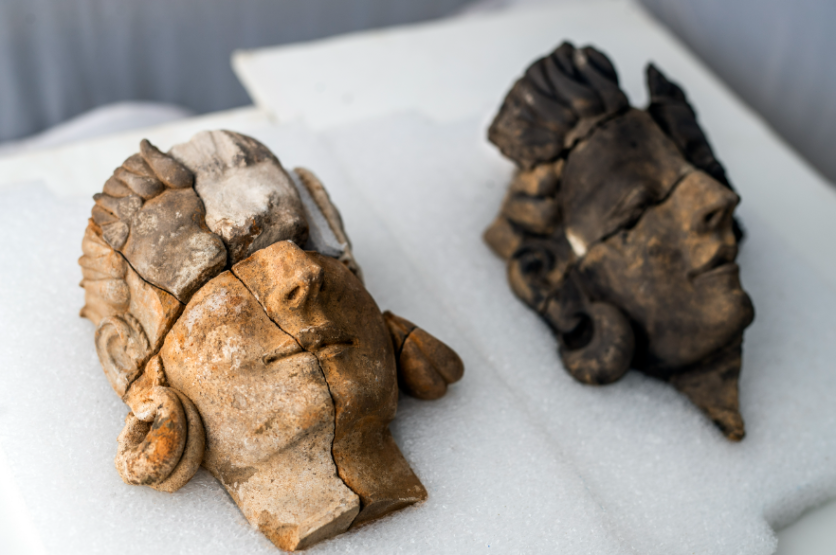A team of archaeologists has discovered five reliefs of human faces, likely depicting gods and warriors, from the lost civilization of Tartessos in southern Spain.
The Tartessos civilization, which is believed to have flourished around 3,000 years ago, is thought to be linked to the myth of Atlantis.

First Known Human Representations
Uncovering these sculptures at the Casas del Turuñuelo site has provided new insights into the ancient civilization that disappeared approximately 2,500 years ago.
The recently unearthed human faces at the Casas del Turuñuelo site are the first known human representations excavated at the site, dating back to the 5th century BCE.
Among them, two reliefs depict women who may have been goddesses in the Tartessian pantheon, while a third figure, wearing a helmet, could be a Tartessian warrior.
The two remaining reliefs are poorly preserved, but they are believed to be deities that were part of a larger sculpted scene and were watching over the warrior.
Two of the five figurative reliefs recovered, according to the team from the Institute of Archaeology, a joint facility of the Higher Council for Scientific Research (CSIC) and the Junta de Extremadura, were nearly finished and represented two female figures with prominent earrings, a hallmark of Tartessian goldsmithing.
These sculptures appear to depict two female deities from the Tartessian pantheon because of their high quality and attention to artistic detail, yet the researchers do not completely rule out the possibility that they were also well-known members of Tartessian society.
The discovery of these gold pieces was previously limited to finds at locations like the Cancho Roano site or within the Aliseda treasure, a collection of Tartessian burial items found in Cáceres.
The quality of craftsmanship and artistic detail in these pieces suggests that they represent two female divinities from the Tartessian pantheon.
Read Also : French Archaeologists Uncover Ancient Roman-era Monumental Complex from the 2nd-3rd Century AD
Challenging Previous Understanding
The discovery of the human faces and gold pieces at the Casas del Turuñuelo site challenges the previous understanding of Tartessos as an aniconic culture that only represented divinity through animals, plants, or stones.
This finding suggests that Tartessos also had a tradition of human representation, marking a significant shift in the interpretation of this civilization.
The Tartessians were an ancient civilization that inhabited the southwest of the Iberian Peninsula in what is now modern-day Spain and Portugal.
They flourished from the 8th to the 6th centuries BCE, with their cultural and economic center located in the Guadalquivir River valley.
However, much of the Tartessian's history is still shrouded in mystery. They left behind few written records, and much of what is known about them comes from archaeological discoveries and ancient texts from other cultures that had contact with them.
The discovery of the Casas del Turuñuelo site and its artifacts has shed new light on this enigmatic culture and has provided new avenues for research and analysis.
Related Article : Archaeologists May Have Found World's Oldest Runestone in Norway Inscribed 2,000 Years Ago

ⓒ 2025 TECHTIMES.com All rights reserved. Do not reproduce without permission.




